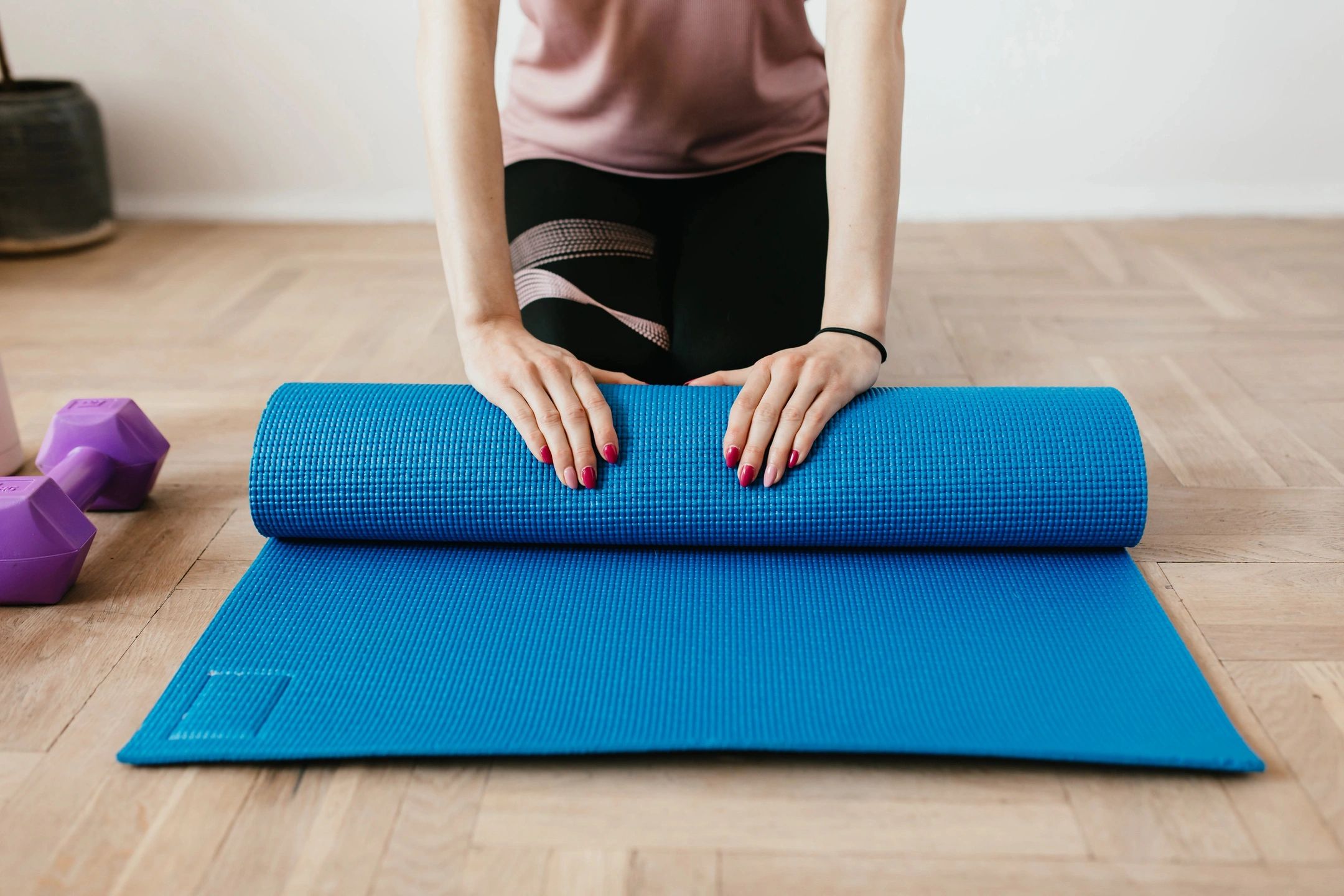Do you find yourself jumping to the worst-case scenarios? Can simple things feel overwhelming? Does the thought of Monday morning make your stomach churn?
Anxiety can really take over our minds if we let it. But it doesn’t need to be this way.
Yoga practices can bring you back into the moment, helping you to take control of your anxiety. Yoga is so much more than stretching our bodies – it’s a powerful practice for our minds which means that yoga can help manage anxiety, stress and overwhelm.
For centuries, yoga has been used to manage anxiety as a way to activate the parasympathetic nervous system (also called the ‘rest and digest’ mode) and relieve anxious thoughts and feelings.
In this blog you’ll find techniques and practices our yoga therapist, Sue, recommends to calm your nervous system and manage anxiety.
1. Breathwork (Pranayama)
Breathwork is a practice often known as Pranayama. ‘Prana’ means breath or life force, ‘Yama’ translates to discipline, while the hidden ‘Ayam’ refers to development.
Deep breathing positively influences the nervous system by calming it down and activating the parasympathetic response. Nadi Shodhana is a type of yogic breath control practice commonly known as alternate nostril breathing. It can help reduce anxiety and stress and relax your body and mind while promoting overall well-being.
Ujjayi breathing is another Pranayama practice that helps a busy mind by focusing on the breath. It creates a sound that synchronises your movement with your breath.
How to Try:
Ujjayi breathing involves keeping your mouth closed as you inhale and exhale. Constrict your throat enough to create a breathing sound almost like snoring or an ocean wave, while controlling your breath with your diaphragm. To maintain the calming rhythm, keep each inhalation and exhalation the same length.
2. Meditation for Grounding and Awareness
For thousands of years, people have practised meditation as a way to focus on the present moment. This grounding technique helps you observe your thoughts without being overwhelmed.
Formal practices can include:
Mantra Meditation: focus on a mantra (a thought or phrase) and pay close attention to your breath as you repeat the mantra. If your mind wanders (which it likely will) redirect your thoughts back to the mantra.
Guided Imagery Meditation: this practice focuses on visualising calming and positive scenarios or settings to help your mind and body relax. You might want to consider using a guided imagery video or app to follow along and help you focus.
Body Scan Meditation: helps you recognise the sensations in your body. Sitting or lying down, take in deep breaths and focus on a specific area of your body. Notice the sensation in that area before moving on to another part. Continue mindfully scanning your whole body – many people do this by scanning from the feet up to the head or vice versa.
3. Yoga Nidra for Deep Relaxation
Following on from above, Yoga Nidra (yogic sleep) has similarities to body scan meditation.
Yoga Nidra is another ancient practice that allows you to lie on your back while focusing on mental imagery. The practice is intended to bring you into a state of deep relaxation similar to sleep, but without actually falling asleep. Instead, you maintain conscious awareness.
4. Restorative and Yin Yoga for Nervous System Reset
Restorative and Yin yoga are gentle yoga practices. Both focus on a gentle pace and long-held poses, which are ideal for beginners, but suit all abilities.
Restorative yoga incorporates props such as blocks, bolsters, blankets and sandbags and poses can be held between 5-20 minutes to ease the body into a state of rest – perfect for calming the nervous system, so don’t be surprised if you fall asleep!
Yin Yoga pays close attention to deep stretches, stimulating the connective tissue. Holding poses between 2-7 minutes, this practice increases flexibility, improves posture and joint health, and releases trauma and emotions stored in the body.
Try poses like Child’s Pose (Balasana) and Legs Up the Wall (Viparita Karani) to calm your body and deeply relax the parasympathetic nervous system.
5. The Power of Affirmations and Visualisation
Positive affirmations and visualisations can be extremely powerful, nurturing our minds with positive reinforcement; if we water the seed, the flower will bloom.
Visualising is something we do every day (often without realising), but more often than not, these are negative visualisations. We worry about the future and spiral into anxious thoughts about the worst possible outcome.
Positive affirmations and visualisations counteract this, rewiring our brains to imagine ourselves in future scenarios that only lead to positive outcomes. By accessing your subconscious mind this way, you maintain a consistent positive mood, make lasting behavioural changes and find emotional balance.
Finding help to manage your anxiety
Feeling anxious right now? Try one of these practices to reduce your anxiety
If you don’t feel like you’re in the right place to do so (perhaps you’re at work or on the train!) then give yourself a moment of quiet and focus on taking big, deep breaths. There’s no need for formal techniques to meditate and bring you into the present moment. Just breathe.
Choose positive affirmations and mantras that you can repeat to yourself throughout the day and try to interject any negative thoughts with positive ones to calm your nervous system.
Weave other practices, such as the restorative and/or yin yoga, the Yoga Nidra and the deeper meditation exercises into your daily or weekly routine when it works with your schedule. The more you practise, the easier it will be to reset your nervous system and take control of your anxiety.
Would you like further advice and support? Speak to Sue or another member of the Wellbeing Collective by visiting the contact page or learn more about our therapists here.

